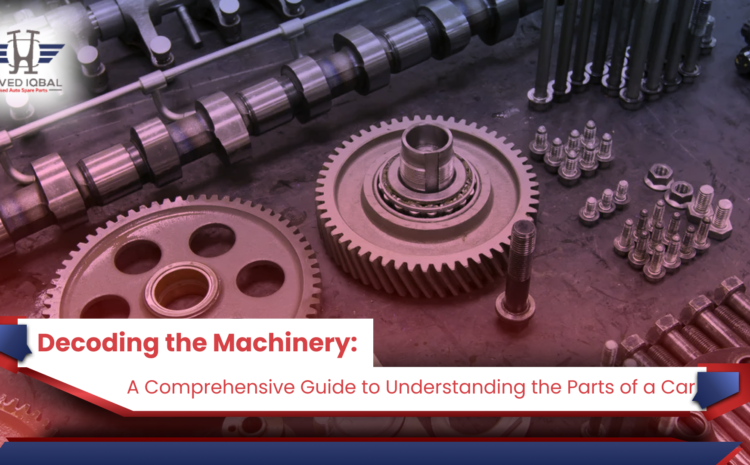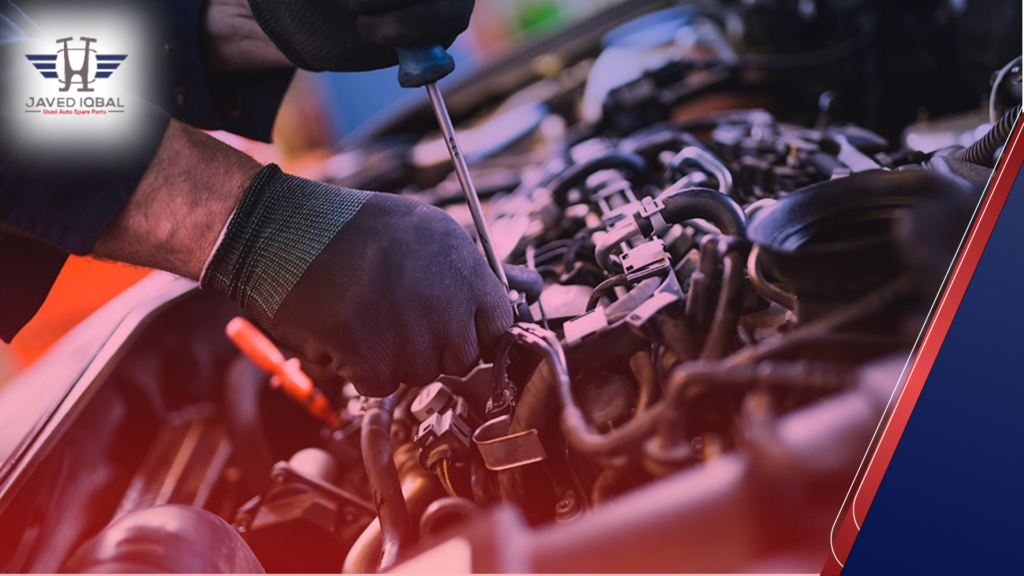
Decoding the Machinery: A Comprehensive Guide to Understanding the Parts of a Car
Cars are machines with many components working together to transport us from one place to another. Understanding the different parts of the car will help you to take care of it better. If you are a car driver and owner, then you should know more about the car parts and the function of these car parts. In this blog, we will take you to explore the different parts of the car. These car parts will help you to understand more about the car and you can take care of it in a better way. Let’s dig into it:

Cylinder Block and Pistons
The engine’s cylinder block houses machined cylinders where controlled explosions occur. Pistons, tightly fitted within these cylinders using piston rings, move up and down in a rhythmic fashion by the combustion process. This mechanical energy is the driving force that sets the wheels in motion.
Crankshaft and camshaft
The crankshaft, a rotating shaft connected to the pistons, also converts the linear piston motions into rotational power, carrying it to the transmission where it can be controlled. However, the camshaft controls the precise timing of the engine’s valves. It orchestrates the inflow of air and fuel. It also outflows the exhaust gases, ensuring optimal performance. It is connected to the crankshaft through a timing belt or chain from its placement in the cylinder head. It keeps the two synchronized for reliable performance.
Cylinder head and valves
Sitting at the cylinder block, the cylinder head houses intakes and exhaust valves. These valves open and close at particular intervals to regulate the flow of air and fuel into the cylinders and maintain the delicate balance required for efficient combustion.
Intake and exhaust manifolds
The intake manifolds channel a precisely metered mixture of fuel and air into the cylinders. Meanwhile, the exhaust manifolds usher away the exhaust gases. These components are vital to ensure the engine receives the right air-fuel mixture and also can expel the waste gases efficiently.
Powertrain and transmission
For all internal combustion engine cars, one of the three transmission types is connected and installed to the rear side of the crankshaft. No matter the type, the highly complex mechanical system’s purpose is to allow control over the vehicle’s direction and speed through gear changes.
Differential and driveshaft
A different one is designed with a set of gears and pinions within a housing. It splits power from the engine to the wheels, permitting them to rotate at different speeds during turns. This design enables precise controls, and traction and prevents excessive wear on tires.
Wheels and tires
The wheels and tires are the only parts of the car that make contact with the road. They play a vital role in braking, handling, and traction. The electrical system powers all of the electronic components in the car, including the engine, headlights, taillights, radio, and air conditioning. It includes the battery, alternator, starter, and fuses.
Body and interior
The body of the car provides protection for the occupants and houses all of the internal components. It’s made up of a variety of materials, including steel, aluminum, and plastic. The interior of the car includes all of the components that the occupants interact with, such as the seats, dashboard, steering wheel, and pedals. It also includes various safety features, such as airbags and seatbelts.
Conclusion
This is just a brief overview of the many parts of a car. For more detailed information, please consult your car’s owner’s manual or a qualified mechanic. Oil is essential for lubricating and protecting the engine’s components. It’s important to check the oil level and change it regularly according to your car’s manufacturer’s recommendations. Properly inflated tires improve fuel efficiency, handling, and braking. It’s important to check the tire pressure regularly and inflate it to the recommended pressure.
Tune-ups help to keep your car running smoothly and efficiently. A tune-up typically includes cleaning the fuel system, adjusting the spark plugs, and replacing the air filter. Brakes are one of the most important safety features on a car. It’s important to have your brakes inspected regularly by a qualified mechanic.
Keep your all car parts in place and enjoy the best car rides. JIUASP is one of the best spare parts companies in Dubai, UAE. We will provide you with the best used and spare car parts in UAE. Feel free to contact us and get a free consultation on the car parts.
